Previously: Art and Medicine at the Mori Art Museum in Tokyo (Part 1).
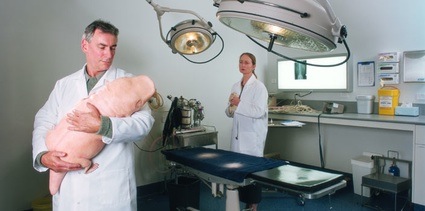 Patricia Piccinini, Science Story, Part I: Laboratory Procedures, 2002
Patricia Piccinini, Science Story, Part I: Laboratory Procedures, 2002
Toward Eternal Life and Love, the last section of the exhibition Medicine and Art, attempts to bring light on the latest developments in biotechnology, cybernetics and neuroscience, but also on the vital issues they entail. Can our definition of life remain forever unchallenged? Is the human commitment to reproduce going to stay the same? Are there limits to the way we will be able to modify and ‘enhance’ our body in the future? Will we ever reach our dreams of immortality? How much can medical and scientific developments impact the way we love and live?
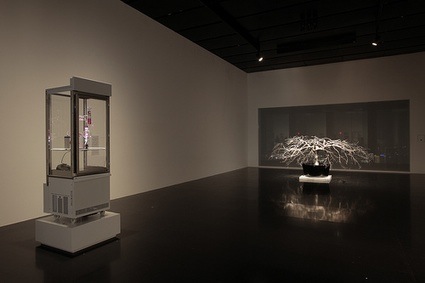 Exhibition view. Image Mori Art Museum
Exhibition view. Image Mori Art Museum
The latest advancements of science are presented into a historical perspective, with the proponent of the theory of evolution, Charles Darwin, as the key protagonist of this section of the exhibition. His theories about evolution through natural selection were evidenced in his 1859 essay On the Origin of Species. The book stirred much controversy but Darwin’s ideas on evolution became accepted by the scientific community and much of the general public in his lifetime. As the current debate around creationism demonstrates, Darwin’s theory of evolution still haven’t met unanimity. A Creation museum in Kentucky, US even brandishes the moto “Life doesn’t evolve around Darwin.”
The Mori Art Center had brought to Tokyo many original illustrations related to Darwin’s research on animals and men but also ivory phrenological heads, some of the original metal plates used by Francis Crick and James D. Watson to build a double helix model of DNA and determine its molecular structure, etc.
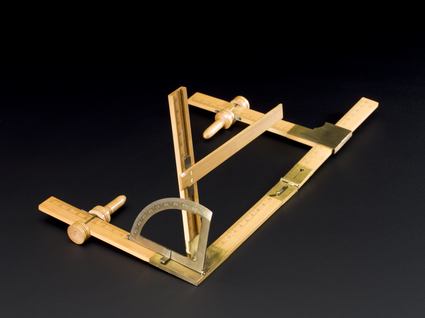 Broca-type goniometer for measuring the angles of the face, France, 1865-1875. Credits: Science Museum London
Broca-type goniometer for measuring the angles of the face, France, 1865-1875. Credits: Science Museum London
One of the most puzzling artifacts for me was this goniometer. Invented in the early 1860s by surgeon and anthropologist Paul Broca, the goniometer was designed to measure the ‘Jacquart’ angle of the face. “Scientifical” measurements of the face were used by anthropologists in the 1800s to classify human types and races, in the mistaken belief that some human groups were more evolved than others. Human types were then placed on an evolutionary ladder, inevitably with Europeans at the top.
The artworks that illustrate the Toward Eternal Life and Love chapter range from the very pop to the acutely grave.
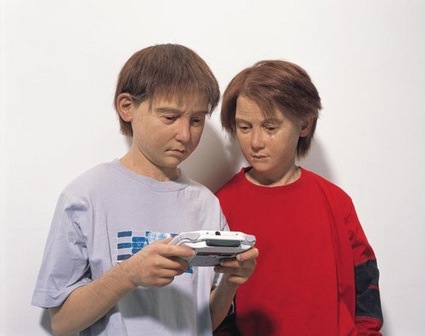 Patricia Piccinini, Game Boys Advanced, 2002 (detail.) Image Roslyn Oxley9 Gallery. Copyright Patricia Piccinini
Patricia Piccinini, Game Boys Advanced, 2002 (detail.) Image Roslyn Oxley9 Gallery. Copyright Patricia Piccinini
And Patricia Piccinini‘s Game Boys Advanced are quietly disturbing. A couple of boys absorbed into a handheld video game shouldn’t raise an eyebrow. Except that on closer inspection, the kids appear to be twins with prematurely wrinkled, slack skin.
The brothers are not really twins, they are clones. The boys’ accelerated decrepitude is a nods to reports that Dolly the sheep was ageing at a more rapid rate than would be expected. The scientists responsible for her seeing the light argued that the reason or Dolly’s arthritis might have been the sedentary existence she led in laboratory rather than any genetic problems resulting from the cloning process.
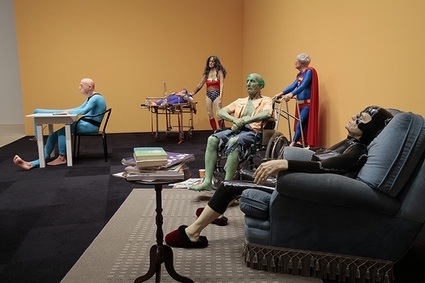 Gilles Barbier, L’Hospice (The Nursing Home), 2002. Exhibition view (image Mori Art Museum)
Gilles Barbier, L’Hospice (The Nursing Home), 2002. Exhibition view (image Mori Art Museum)
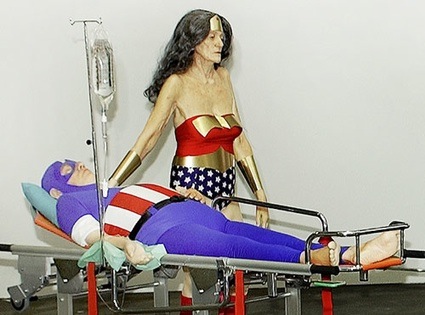 Gilles Barbier, L’Hospice (The Nursing Home), 2002. Detail
Gilles Barbier, L’Hospice (The Nursing Home), 2002. Detail
When American superheroes get too shabby, they are sent to vegetate in Gilles Barbier‘s Nursing Home. The work refers quite straightforwardly to our societies’ obsession with eternal youth. Should medical research be geared towards the fight against the loss of youthfulness? Or isn’t medicine’s most noble mission to provide us with better lives? Will our society ever revert to respecting old age?
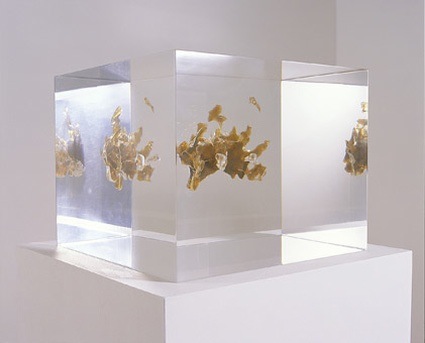 Sense, Annie Cattrell, 2000. Detail. Photo Peter Cattrell
Sense, Annie Cattrell, 2000. Detail. Photo Peter Cattrell
Annie Cattrell used FMRI (functional magnetic resonance imaging) brain scanning techniques to create Sense, a fascinating series of sculptures that map the activity patterns of the brain as it responds to touch, smell, sight, hearing and taste. Scans of a subject’s brain using each of the senses were produced with FMRI. These scans were then converted into 3D structures of amber resin using a rapid-prototyping process.
Tokyo art beat has an interview with Oron Catts. The Victimless Leather -which he developed together with Ionat Zurr- was one of the highlights of Toward Eternal Life and Love.
Special mention to the fantastic coin-operated dispenser of plastic body parts which you can find inside the exhibition shop:
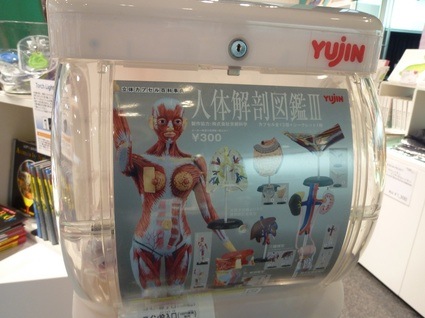
The exhibition Medicine and Art runs until February 28, 2010 at the Mori Art Museum in Tokyo.
